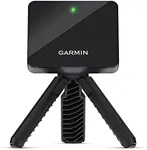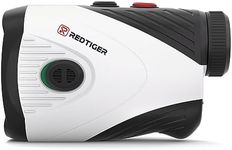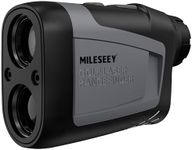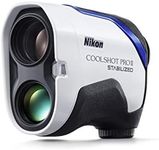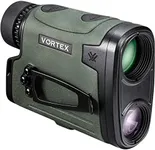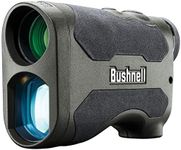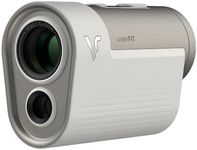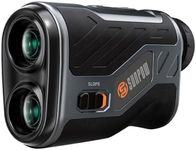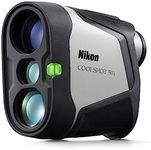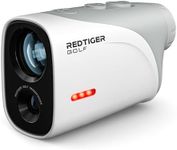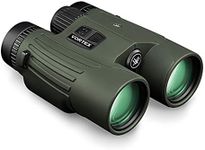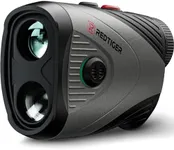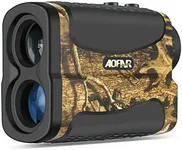Buying Guide for the Best Rangefinders
When choosing a rangefinder, it's important to consider what you'll primarily be using it for, such as golfing, hunting, or other outdoor activities. Rangefinders are designed to measure the distance from the observer to a target, and different models offer various features that can enhance your experience depending on your specific needs. Understanding the key specifications will help you make an informed decision and select a rangefinder that best suits your requirements.RangeThe range of a rangefinder refers to the maximum distance it can accurately measure. This is crucial because it determines how far away you can be from your target and still get a reliable reading. Rangefinders typically have ranges from a few hundred yards to over a thousand yards. If you're using the rangefinder for golf, a shorter range might suffice, whereas hunting or other outdoor activities might require a longer range to spot distant targets. Consider the typical distances you'll be measuring to choose the appropriate range.
MagnificationMagnification in a rangefinder allows you to see distant objects more clearly by enlarging them. This is important for identifying targets that are far away. Rangefinders usually offer magnification levels between 4x and 8x. Higher magnification can be beneficial for long-distance viewing, but it might also make it harder to keep the target in view due to hand movements. If you need to see fine details at a distance, opt for higher magnification, but for general use, moderate magnification might be more practical.
AccuracyAccuracy refers to how close the rangefinder's measurement is to the actual distance. This is a critical feature because it affects the reliability of the information you receive. Most rangefinders offer accuracy within a yard or meter, but some high-end models can be even more precise. If precision is crucial for your activity, such as in competitive sports or precise hunting, look for a rangefinder with higher accuracy. For casual use, standard accuracy should be sufficient.
Size and WeightThe size and weight of a rangefinder can affect its portability and ease of use. A compact and lightweight rangefinder is easier to carry around, especially if you'll be moving a lot, such as on a golf course or during a hunt. However, smaller models might have fewer features or a shorter range. Consider how you'll be using the rangefinder and whether portability or additional features are more important to you.
DisplayThe display of a rangefinder shows the distance measurement and sometimes additional information like angle or battery life. A clear and easy-to-read display is important for quickly understanding the data, especially in bright sunlight or low-light conditions. Some displays offer features like illuminated readings or adjustable brightness. Think about the environments you'll be using the rangefinder in and choose a display that will be visible and convenient for those conditions.
Durability and Weather ResistanceDurability and weather resistance are important if you plan to use your rangefinder in harsh conditions. A durable rangefinder can withstand drops and rough handling, while weather resistance ensures it can function in rain or fog. Look for models with rugged construction and water-resistant or waterproof ratings if you'll be using the rangefinder outdoors frequently. Consider the typical conditions you'll encounter and choose a model that can handle them.
